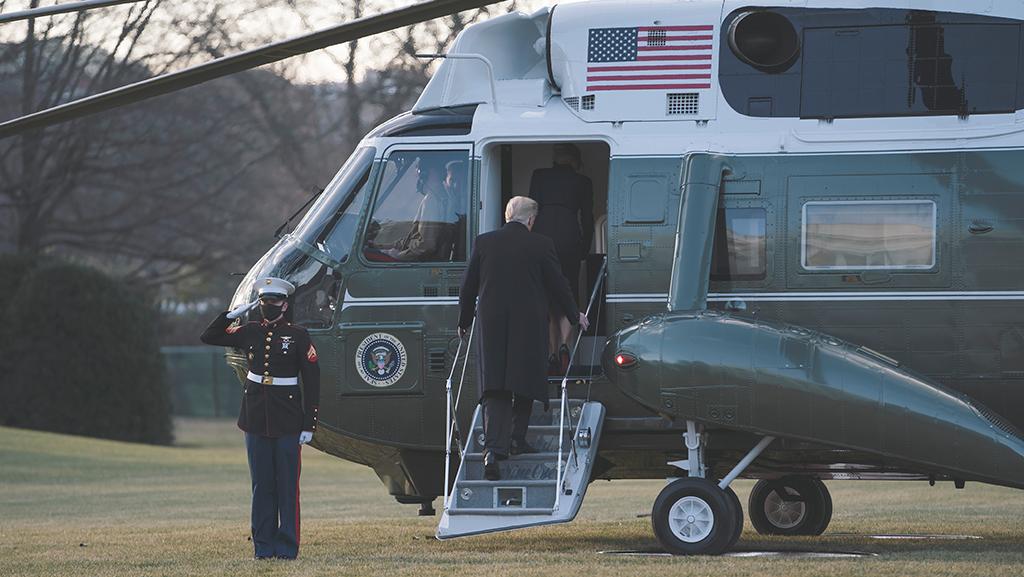
As President Joe Biden settles into the Oval Office, it is becoming clear to industry observers that China’s accelerated recovery from COVID-19 and its relatively stronger economy will play an important role for Airbus, Boeing and their suppliers. This prospect seems likely despite the Trump administration’s flurry of anti-China business directives as well as the surprising revelation via cabinet confirmation hearings that Biden might not immediately alter the vector.
“Who would have thought that the Biden administration would have been moving closer to protectionist policy rather than global trade liberalization policy,” a well-known U.S. aerospace and defense consultant tells Aviation Week. “Keep your powder dry, and let this sort out to see where this administration is going to settle in,” he advises.
For one thing, the proclamations former President Donald Trump made just before leaving office might not have a significant effect on Western aerospace business with China, even though they seemingly imposed prohibitions against U.S. companies and citizens doing business with Chinese companies, including several in the aerospace and defense industry. Yes, Trump issued several new blacklists—e.g., Communist Chinese military companies (CCMC), military end users (MEU) and others—along with pages of official explanations in the final days of his administration. But a preliminary review leaves it wholly unclear whether any new roadblocks were placed on the numerous U.S. providers supplying the Comac C919 or finishing lines for Boeing 737s, Airbus A320s or other aircraft.
“Although the names and underlying policy concerns are similar, the scope and source of the prohibitions regarding each set of Chinese entities are quite different,” Akin Gump advisors said on Jan. 20. “Companies on one of the lists are not automatically on others, but overlap is possible as the lists evolve.”
The CCMC directive, for instance, prohibits Americans and U.S. companies from owning the blacklisted companies or investing in their securities as of Nov. 11, 2021. The list includes obvious entities such as Chinese military provider Avic but not Comac or any of its six major subsidiaries such as Shanghai Aircraft Manufacturing Co. (SAMC). Furthermore, while the Treasury Department’s CCMC rule prohibits investing in CCMCs, it does not ban exports to them, according to Akin Gump.
Indeed, the closest the Trump administration came to explaining anything for aerospace was buried in a question-and-answer for the MEU list, which named SAMC, among others. “How can exporters determine whether a person’s or entity’s actions or functions are intended to ‘support or contribute to’ a ‘military end use’?” a questioner asked. “For example, U.S. companies have been exporting [Commerce Department]-controlled items to Chinese companies, including state-owned enterprises, for the manufacture of parts for end use on commercial aircraft.”
The answer: You tell us. “If the specific end user to receive the item is engaged exclusively in civilian work, it would not be an MEU,” Commerce officials responded. “Thus, you must ascertain the activities of the specific end users in determining whether the intended end user is an MEU.” By the way, prior Commerce export licensing is not an indicator of being an MEU or not, they added.
It seems doubtful U.S. companies will rush to eject themselves from China’s commercial aerospace ascendancy. According to a December report from the Center for Strategic and International Studies in Washington, almost three-fifths of top C919 suppliers are U.S. companies and almost one-third are European. Only 14 key suppliers are from China, and seven of those are Chinese-Western joint ventures.
Meanwhile, as Bloomberg Intelligence analysts noted on Jan. 26, China is one of the most important markets for Boeing and Airbus; it supports close to 300 737 and A320 deliveries a year, historically, with respective backlogs showing an almost equal number of orders, thus balancing the opportunity for deliveries. In other words, China is key for OEM deliveries and build rates in 2021 and beyond. Even a “low-growth” scenario of 6% GDP likely means China would need at least 264 new aircraft over the next five years.
Trump’s 2019 Phase 1 agreement called for an additional $32.9 billion in Chinese purchases in 2020 and $44.8 billion more this year. “It will be difficult or impossible to meet the levels without aircraft,” the Bloomberg analysts observe.
Trump knew this, and likely so does Biden. Trump may not have made aerospace work with China any harder on a permanent basis, and it is questionable whether Biden will do so or simply try not to be as confrontational as his predecessor. Less confrontation would be welcome, of course, so that market forces can play out and both sides can benefit from the aerospace trade.
Editor's note: This column was edited to clarify the date when Americans and U.S. companies are prohibited from owning the blacklisted companies or investing in their securities.





